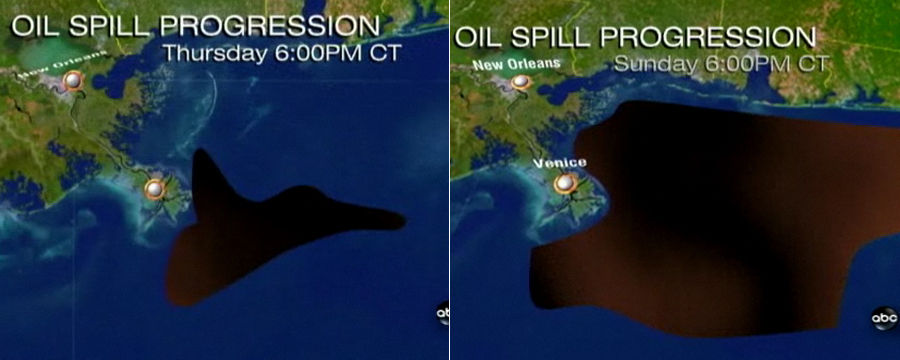
Unfortunately, there are no easy answers to the Gulf oil spill.
From Treehugger...
Burn
Crude oil has a relatively high flash point of 140°F. Since the oil slick is spread out and quite thin, this surface layer does not contain enough chemical potential energy per square foot to sufficiently heat the oil adjacent to it. There were attempts made at burning off some of the oil. In order to sustain the combustion, boats with booms were used to corral enough oil to achieve combustion that could be sustained. By one estimate heard on NPR only about 3% of the oil could have been burned off in this way.
Disperse
There has been much talk of chemical dispersants. These dispersants work to transform an oil slick into individual oil droplets that will mix into the sea water to be later biodegraded by naturally occurring micro-organisms. The military is providing support with aircraft that can cover 250 acres per flight, up to three times per day. This is a total of 1,500 acres, or 2.3 square miles, compared to the 3,850 square miles already covered in oil. According to White House nearly 143,000 gallons of dispersant have been deployed already and an additional 68,300 gallons are available (BP is said to have already purchased 1/3rd of the world's supply). In terms of supply, effectiveness, and net environmental benefit, chemical dispersants don't seem to be the magic bullet that we are looking for either.
This genie can't be put back into the bottle again but we can certainly keep future genies bottled up if we finally get serious about alternative and renewable sources of energy.
No comments:
Post a Comment